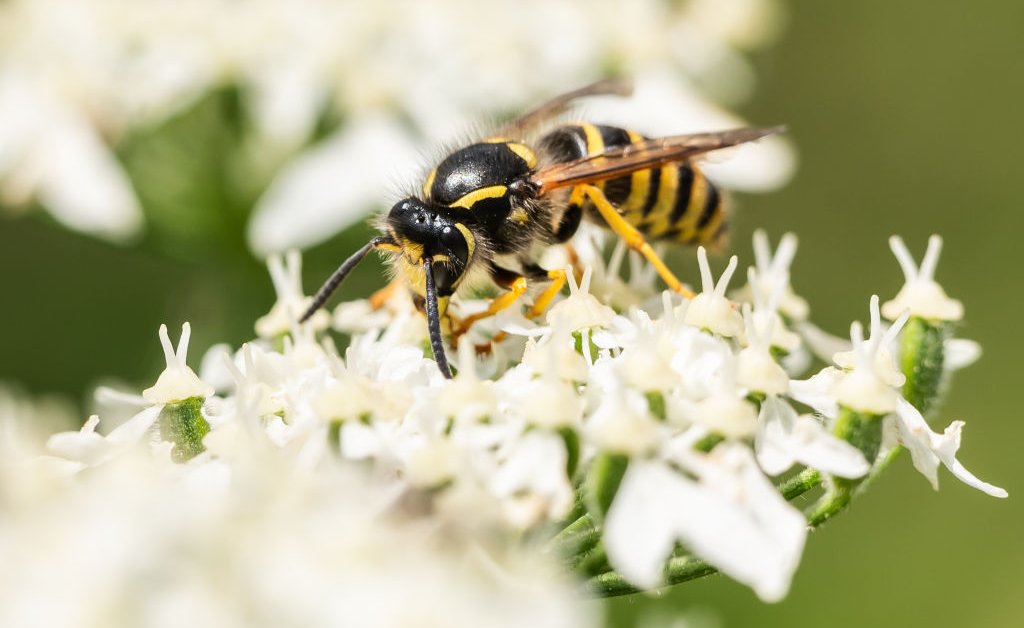With summer around the corner, so too are the bugs. Insects, much like their human counterparts, are more lively in the spring and summer when the weather is warmer. And climate change means that globally summers on average could get less buggy. But when it comes to some of the more pesky pests, like ticks and mosquitoes, it could feel like there are more of them as they broaden their range of habitat or timing when they emerge for the season.
Our changing climate, however, stands to impact different species of insects in different ways. Studies show that globally an increasing number of insects could be at risk for extinction. Many are also emerging either earlier or later in the year than they used to as weather patterns change. While you might be hoping to put away the bug spray, experts warn that the change could have harmful impacts on ecosystems, agriculture, and in some cases, health.
Some insects are adapting to changing climates by moving to regions that might have previously been unsuitable.“They are not just expanding their ranges, but they’re becoming more abundant in places where maybe they weren’t as abundant before,” says Anahí Espíndola, associate professor of entomology at the University of Maryland, College Park.
For some species, this can be cause for concern. For example, climate change is lengthening mosquito season and expanding the areas where mosquito-borne diseases like malaria or West Nile virus may spread. “The likelihood of certain diseases being transmitted in places where those diseases weren’t really a problem before are increasing, and we are expecting those problems to actually become worse as temperatures continue to increase,” says Espíndola.
In the U.S., the number of “mosquito days” with warm, humid weather the insects thrive on, have increased around the country, according to an analysis by Climate Central. Climate change is also increasing the geographical range of ticks—which could increase the spread of Lyme disease.
Shifts in weather patterns meanwhile are causing some insect species to emerge at different times of the year than they once did. This change in timing can impact the insect’s chance of survival—and that of the other species that might rely on it. “Right now, we’re seeing increases in temperature and increases in drought, and that will have impacts on the ability of species to survive in certain places, and the ability of species to interact with the right organisms,” says Espíndola. “If you’re a pollinator, and you’re emerging and you are looking for a particular group of plants that you’re going to be collecting pollen or nectar from, if that plant has already flowered, you have this temporal mismatch with organisms that you should be interacting with to be able to survive.”
The misalignment stands to have big impacts on ecosystems—changing how a species interacts with plants and other organisms. “That’s a big concern, because those insects are pollinators for crops and they are part of food chains for terrestrial animals, and are critical to a lot of ecosystems, as well as pollinators to our own food production,” says Mario Gallio, professor in the department of neurobiology at Northwestern University, whose work focuses on how temperature impacts insect behavior.
Pollination changes stand to impact our food systems. Over 80% of all flowering plant species are pollinated by animals, mostly insects, with pollinators playing a role in over 35% of the world’s crop production. Wasps, for example, are reportedly declining in population in England as the country sees more rainy days and flooding—impacting pollination and ecosystems.
While sometimes annoying, insects are more important than many of us give them credit for, say experts. “The biodiversity ecosystem, animals, birds, everything depends on robust food chains that often have insects as an important component,” says Gallio. “We are looking at impoverishing all sorts of ecosystems that have this one step that involves insects. For people who care about nature, it’s scary, for people who care about their food, it’s scary. There is plenty to be concerned about.”
The post What Climate Change Means for Summertime Bugs appeared first on TIME.




